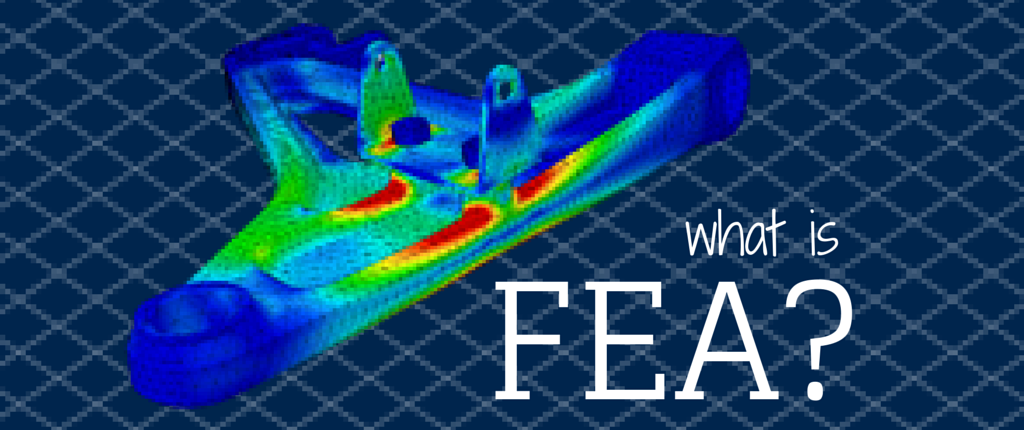
Acronyms are so often thrown around in our day to day lives that it’s easy to glimpse over their actual meaning the letters represent.
In engineering consulting conversations, the term FEA often comes up, especially when talking about the best FEA software to use for engineering projects. We’ve done our share of throwing around the term, but want to take a step back and define it.
FEA stands for finite element analysis, a commonly used method for multiphysics problems. Finite element analysis is defined as a numerical method which provides solutions to problems that would otherwise be difficult to obtain. In simple terms, FEA is a faster way to get results to problems that are hard to solve.
At its most basic level, FEA answers the question: if we apply a force on a solid, what are the value of the displacements, stresses, and strains at each material point? For the non-science people, basically FEA tells us where an object is liable to break or strain in some way, making it unsafe or unusable.
The most common FEA problem involves determining stress intensity factors of a load upon a given object. This can take the form of a structure analysis, solid mechanic analysis, dynamics, thermal analysis, electrical analysis, biomaterials, etc.
FEA uses displacement formulation to calculate component displacements, strains, and stresses under internal and external loads upon an object. Most FEA calculations involved metallic components. These components can be analyzed by either linear or nonlinear stress analysis. Choosing linear or nonlinear depends upon how far you’d like to push the design.
Most FEA calculations are done in FEA software like SIMULIA. A component is designed in a CAD software like CATIA and imported into SIMULIA to be analyzed. FEA problems never have an exact answer.
FEA is an important part of the product design and development process. It identifies where problems may occur in a product or object. FEA mathematically calculates the problem areas of an object, saving engineers the time and effort needed to build a physical prototype. Prototype tests do not provide the type of numerical information that FEA does, making the product development process longer. FEA software saves time and effort for engineers—they can tweak design based on FEA calculations.
RGBSI has a knowledgeable FEA team to help you complete complex simulation projects. To learn more about RGBSI’s FEA engineering services, click here. You can also do your own FEA with DS’s SIMULIA. To learn more about RGBSI’s partnership with FEA software SIMULIA, click here.
Sources:
http://www.solidworks.com/sw/products/simulation/finite-element-analysis.htm










